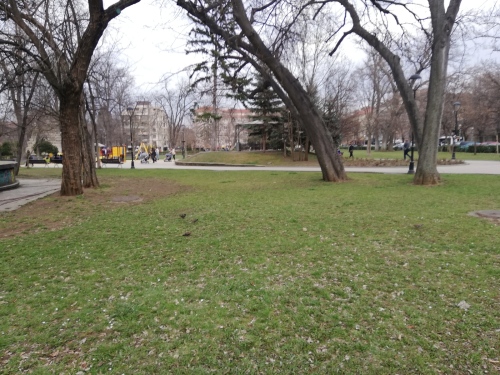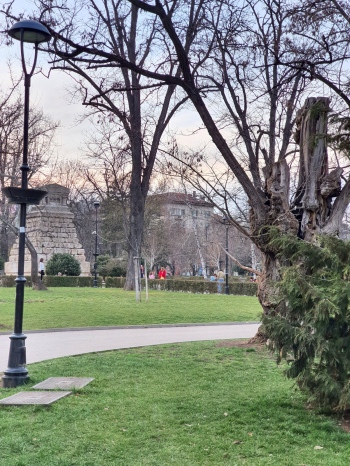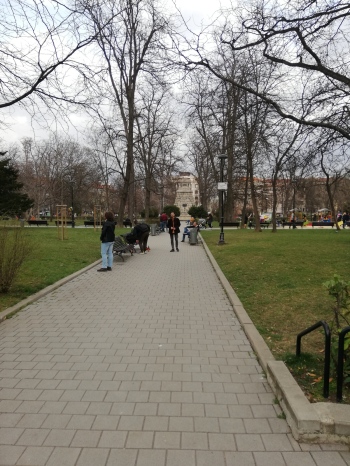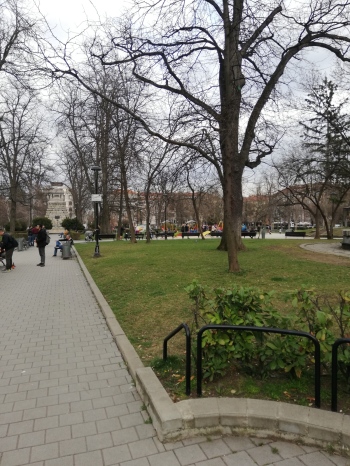The doctor's garden
Location / GPS: 42.69449553398615, 23.338711163939948
Objects nearby: University Library
Public object / Private object: Public object
 The doctor's garden
The doctor's gardenThe Doctor's Garden is named after the monument, which was erected in its central part in honor of the fallen doctors who participated in the Russo-Turkish War of Liberation from 1877-1878. Later it was registered as one of the first monuments of garden and park culture in the country. . It still grows a unique selection of 13 coniferous and 52 deciduous species, over 30 species of shrubs, about 20 species of perennials and many summer flowers.
In the very beginning, the plan envisaged a circle around the monument, and it would be a kind of center of the garden. The two main alleys intersected in the shape of a cross. This motif is repeated in a reduced version in the resulting four spaces, dividing the terrain into 16 mini plots. In fact, this is the first attempt in the country to plan a small garden in Anglo-Chinese style. Years later, the Doctor's Garden became a university botanical garden at the insistence of the Higher School in Sofia. From 1900 to 1934 the garden was managed by the first graduate in the country to study park design in Paris - Hristo Mihov. He also created the rock garden. In 1936 a new reconstruction of the garden for public use was made. The spaces are being consolidated, and the landscape alleys are being simplified, which allow the discovery of unique views of the ornamental and bush vegetation. The garden has an individual look, an enviable compositional finish and an exceptional richness and variety of decorative species.
Sources:
Source 1
Source 2
In the very beginning, the plan envisaged a circle around the monument, and it would be a kind of center of the garden. The two main alleys intersected in the shape of a cross. This motif is repeated in a reduced version in the resulting four spaces, dividing the terrain into 16 mini plots. In fact, this is the first attempt in the country to plan a small garden in Anglo-Chinese style. Years later, the Doctor's Garden became a university botanical garden at the insistence of the Higher School in Sofia. From 1900 to 1934 the garden was managed by the first graduate in the country to study park design in Paris - Hristo Mihov. He also created the rock garden. In 1936 a new reconstruction of the garden for public use was made. The spaces are being consolidated, and the landscape alleys are being simplified, which allow the discovery of unique views of the ornamental and bush vegetation. The garden has an individual look, an enviable compositional finish and an exceptional richness and variety of decorative species.
Sources:
Source 1
Source 2



